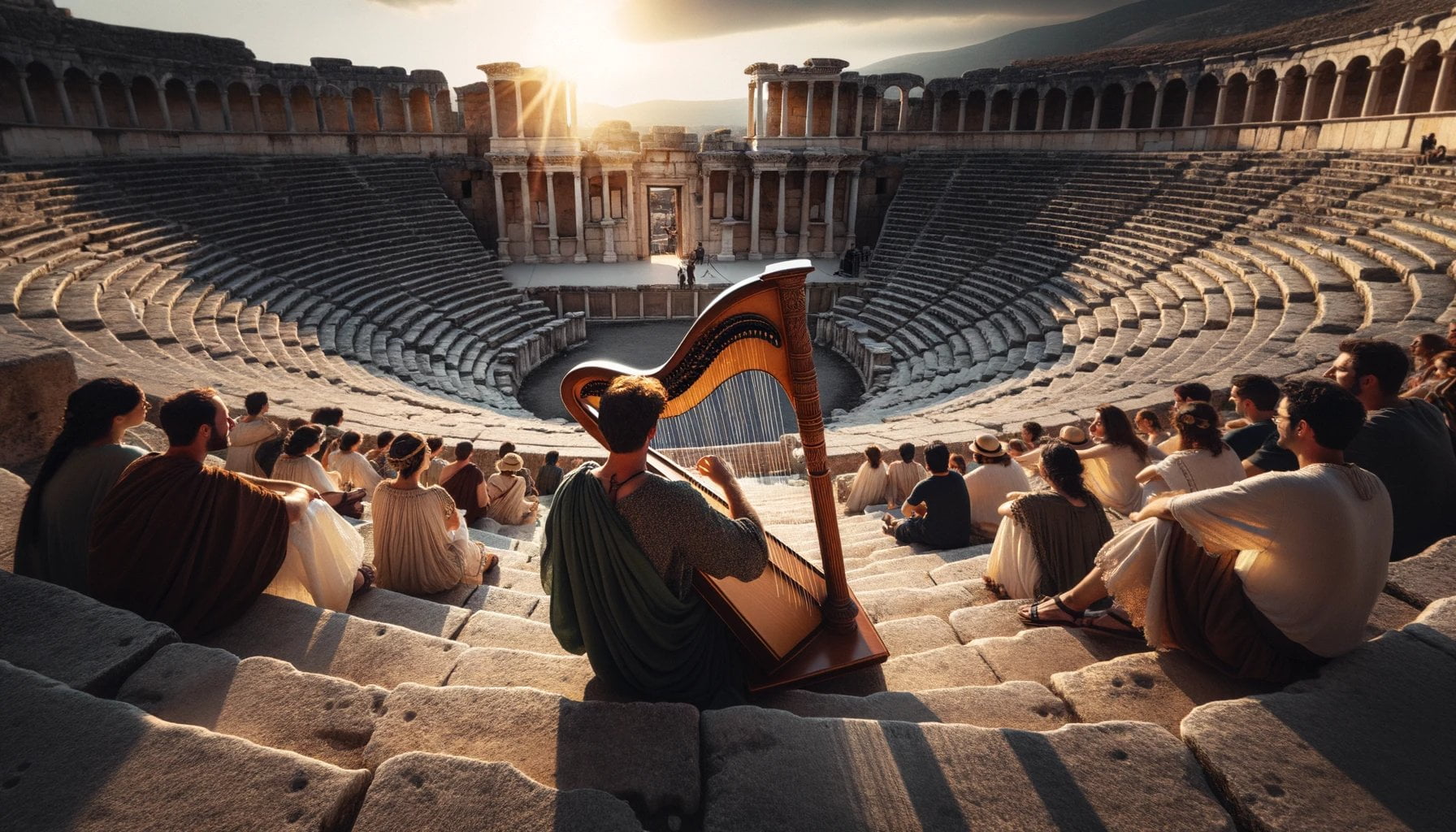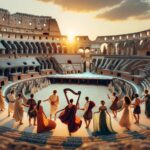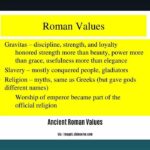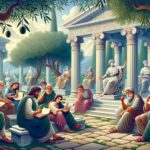Explore the rich musical legacy of ancient Rome as we delve into the instruments, genres, and profound impact that music had on this remarkable civilization. From everyday life to religious ceremonies and entertainment, the melodies and harmonies of ancient Roman music offer a unique window into the culture and society of this fascinating era. Join us as we uncover the hidden treasures of this musical world and discover the enduring influence it has had on our own musical traditions.
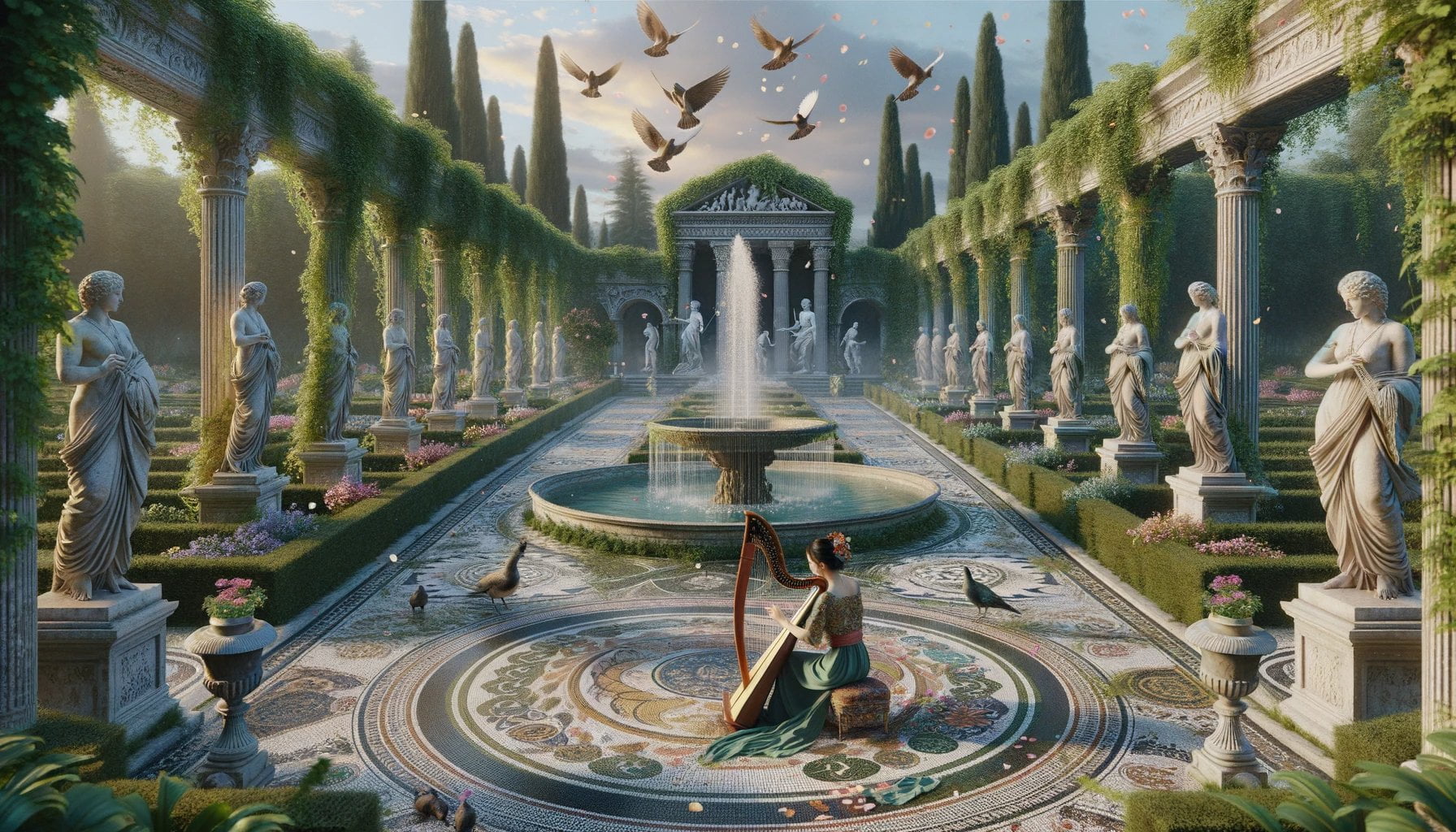
Key Takeaways:
- Ancient Roman music and singing originated from Etruscan and Ancient Greek music, initially serving military purposes.
- Musical training and skills were commonplace among the upper-class in Rome, particularly among upper-class females.
- Roman art depicted various instruments such as woodwinds, brass, percussion, and stringed instruments.
- Music played a significant role in Roman religious rituals by establishing a rhythm and evoking specific emotions.
- Dance was utilized during religious festivals as a means to express gratitude towards the gods.
- Music was associated with orderliness and believed to reflect the order of the cosmos.
- Etruscan music had an early influence on Roman music, which later expanded during the Imperial period through incorporating traditions from different regions.
- Music accompanied public spectacles, arena events, and the art form known as pantomimus, which combined expressive dancing, instrumental music, and sung libretto.
Music of Ancient Rome: Unveiling the Melodies of the Past
Music sealed within the annals of ancient Roman civilization offers a mesmerizing journey into a world where the harmonious strains of melodies echoed through the bustling streets and grand arenas. With influences stemming from Etruscan and Ancient Greek music, the musical legacy of ancient Rome holds intriguing tales waiting to be unraveled.
The Birth of Roman Music
In its early history, Roman music primarily served a military purpose, resonating through the air to uplift the spirits of soldiers marching into battle. However, as Roman society developed, so too did their appreciation for the art of music. Musical training and skills were particularly prevalent among the upper-class citizens, with women of noble birth often displaying a heightened affinity for the craft. It is believed that female Romans of the upper-class were more inclined to pursue musical education, further enriching the musical tapestry of ancient Rome.
Instruments that Brought the Music to Life
Artistic depictions from ancient Rome reveal a captivating array of instruments, each playing a unique role in the symphony of sounds that swept through the city. Woodwinds, “brass,” percussion, and stringed instruments all found their place in Roman culture. The haunting melodies of flutes and the resounding tones of trumpets wafted through ancient Roman streets, providing a melodic backdrop to daily life. Stringed instruments such as the lyre and the cithara added a touch of elegance and sophistication to the music of the time.
The Role of Music in Religion and Rituals
In the realm of Roman religious life, music played an integral role in setting the rhythm of rituals and evoking the desired emotions. It was believed that music had the power to bridge the gap between mortals and deities, making it an essential component of religious ceremonies. The ancients harnessed the power of music to pay homage to their gods, expressing gratitude and worship through enchanting melodies. Dance, too, had its place in religious festivals, as Romans utilized expressive movements to honor and thank the divine entities.
The Cosmic Connection
Music in ancient Rome was intertwined with the concept of orderliness and harmony. Romans believed that the cosmos itself was a symphony, and music was seen as a reflection of this cosmic harmony. The melodies emanating from the instruments resonated with the celestial rhythms, fostering a sense of connection with the universe. It was this belief in the profound impact of music on the human spirit that imbued the musical legacy of ancient Rome with a sense of transcendence.
Radiating Influence
The musical heritage of ancient Rome not only influenced its own society but also radiated its melodic tendrils to the far reaches of the empire. Etruscan music played a vital role in shaping Roman music during its early development. As Rome expanded its dominion, it incorporated musical traditions from the provinces it conquered, including Asia Minor, North Africa, and Gaul. This amalgamation of diverse musical styles and techniques enriched the cultural tapestry of Rome, breathing life into its vibrant music scene.
From the Arena to the Theaters
Roman music extended beyond the realm of religion, permeating the entertainment spectacles that captivated the masses. The grand arenas thrummed with the rhythmic beats and harmonies, serving as a backdrop to public spectacles and events. Pantomimus, a captivating art form that combined expressive dancing, instrumental music, and sung librettos, dazzled audiences with its versatility and emotional depth. As the curtains rose and the melodies filled the theaters, a vivid mosaic of sound brought tales of love, tragedy, and triumph to life.
As we delve into the musical legacy of ancient Rome, we unearth a world where the melodies of woodwinds and the resonating tones of stringed instruments captured the hearts of the people. The influence of Etruscan and Ancient Greek music, the profound connection with religious practices, and the radiating impact that stretched across the empire all contributed to the rich tapestry of music that echoed through ancient Rome.
Explore the fascinating world of ancient Roman sarcophagi, a testament to the artistry and craftsmanship of a bygone era. Immerse yourself in the rich history and intricate details of these ancient burial containers by clicking here.
Uncover the architectural marvels of ancient Roman temples, where tales of gods and goddesses come to life. Delve into the secrets of these sacred structures by clicking here.
Step back in time and witness the athleticism and passion of ancient Roman sports. Discover the thrilling competitions and sporting prowess of the Romans by clicking here.
Musical Instruments and Genres in Ancient Rome
The music of ancient Rome was a vibrant and integral part of the culture, with its presence being felt in almost every social occasion. From religious rituals to public spectacles, music played a significant role in ancient Roman society. In this article, we will explore the fascinating world of ancient Roman music, focusing on the musical instruments and genres that shaped this rich musical legacy.
Musical Instruments in Ancient Rome
One of the most important musical instruments in ancient Rome was the tibia, a woodwind instrument similar to the Greek aulos. The tibia held a prominent position in Roman religious rituals and sacrifices, with its distinct sound believed to bridge the gap between mortals and deities. This instrument played a vital role in the Roman Imperial cult, where its melodies were used to honor and appease the gods.
Ancient Roman society had a wide variety of musical instruments, including woodwinds, “brass,” percussion, and stringed instruments. These instruments not only served musical purposes but also reflected the social status of the individuals who played them. Musical training and skills were particularly prevalent among the upper-class citizens, with singers dedicating significant time and energy to perfect their craft.
Genres of Music in Ancient Rome
The music of ancient Rome was influenced by various sources, including Etruscan and Ancient Greek music, with a touch of Pythagorean influence in understanding scales and pitches. This rich blend of influences resulted in the development of unique musical genres in ancient Rome.
One of the key genres of ancient Roman music was the carmen, a form of song that was present in almost every social occasion. Whether it was a celebration, a religious ceremony, or a military event, the carmen provided the perfect musical backdrop. This genre was known for its expressive and melodic qualities, captivating the listeners and creating an immersive musical experience.
Impact of Music in Ancient Rome
Music in ancient Rome went beyond mere entertainment; it was considered a reflection of the orderliness of the cosmos and was associated with mathematics and knowledge. The melodies produced by various instruments were believed to have a profound impact on the human spirit, elevating the listener to a higher realm of existence.
Ancient Roman music played a vital role in religious rituals, serving as a medium to connect with the divine. The tibia, in particular, held immense significance in the Imperial cult, acting as the primary instrument to communicate with the gods. Moreover, music was also present in public spectacles, theatrical performances, and military contexts, showcasing the versatility and widespread influence of music in ancient Rome.
Key Takeaways:
- The tibia, a woodwind instrument, played an important role in Roman religious rituals and sacrifices.
- Musical training and skills were common among the Roman upper class, with singers dedicating significant time and energy to practice.
- Ancient Roman music and singing derived from Etruscan and Ancient Greek music, with Pythagorean influence in understanding scales and pitches.
- Different instruments had specific roles in Roman religious rituals, with the tibia being the most important instrument in the Roman Imperial cult.
- Music reflected the orderliness of the cosmos and was associated with mathematics and knowledge.
- Female musicians, dancers, and singers played a significant role in festivals dedicated to goddesses such as Isis and Bona Dea.
- Music was present in military contexts, including military training and ceremonies.
- Music was used during public spectacles, events in the arena, and pantomimus performances, combining expressive dancing, instrumental music, and sung librettos.
Sources:
– Wikipedia – Music of ancient Rome
Music in Religious Ceremonies
Music, an integral part of ancient Roman society, played a significant role in religious ceremonies. It served as a powerful tool to set the rhythm of the ritual and invoke specific emotions, creating a connection between mortals and deities. The rich musical traditions of ancient Rome were deeply intertwined with religious practices, reflecting the cosmic harmony of the universe and its impact on the human spirit.
The tibicines, skilled players of the tibia (a woodwind instrument), were often depicted playing behind altars during religious rituals. Their melodic tunes resonated throughout the sacred spaces, adding a mystical aura to the ceremonies. These musicians were highly valued for their ability to bring the divine presence closer to the worshipers.
Songs (carmen) contributed to the sacred atmosphere of religious ceremonies. These compositions, filled with poetic verses and enchanting melodies, played an essential role in almost every social occasion in ancient Rome. Whether it was a simple household gathering or a grand public event, music wove its way into the fabric of Roman life.
The influence of Etruscan and Ancient Greek music on ancient Roman culture cannot be understated. As the empire expanded and conquered new territories, it absorbed and incorporated musical traditions from these regions. This amalgamation of diverse influences enriched the musical landscape of ancient Rome, creating a unique and vibrant tapestry of sounds.
The appreciation for music in Roman society extended beyond religious settings. Public spectacles and theatrical performances, such as pantomimus, embraced the power of music to captivate audiences. These events provided avenues for musicians, dancers, and singers to showcase their talents and entertain the masses.
Key Takeaways:
- Music in ancient Rome served as a vital component of religious rituals, bridging the gap between mortals and deities.
- The tibia, a woodwind instrument, played a prominent role in setting the rhythm and invoking emotions during religious ceremonies.
- Songs (carmen) were an integral part of social occasions and contributed to the sacred atmosphere.
- The musical heritage of ancient Rome was shaped by influences from Etruscan and Ancient Greek music, adding depth and diversity to its sound.
- Music extended beyond religion and found expression in public spectacles and theatrical performances.
- The profound impact of music in ancient Rome highlights its ability to evoke emotions and connect people with the divine.
Legacy and Influence of Ancient Roman Music
Music in ancient Rome played a significant role in the daily lives of its people. From religious ceremonies to entertainment, music was deeply intertwined with Roman culture. Let’s delve into the legacy and influence of ancient Roman music, exploring its instruments, genres, and the profound impact it had on this civilization.
Instruments of Ancient Roman Music
The musical heritage of ancient Rome drew inspiration from Etruscan and Ancient Greek music. Instruments such as woodwinds, “brass,” percussion, and stringed instruments were prevalent during this time. Of particular importance was the tibia, a woodwind instrument that played a vital role in Roman religious rituals.
Genres of Ancient Roman Music
The carmen, a genre of ancient Roman music, was present in various social occasions. Songs with poetic verses and enchanting melodies were integral to Roman music. They evoked emotions and created a sense of connection. Music in ancient Rome also extended beyond religion and was present in public spectacles and theatrical performances, such as pantomimus.
Impact of Ancient Roman Music
Music in ancient Rome had a lasting impact on Roman culture and society. Its influence extended to conquered provinces, where musical traditions were incorporated into the Roman empire. This musical exchange enriched the tapestry of ancient Roman music, creating a vibrant and diverse musical landscape.
Ancient Roman music was not merely seen as entertainment but was also associated with mathematics and knowledge. It reflected the orderliness of the cosmos and was believed to bridge the gap between mortals and deities. Music was regarded as a medium through which human spirits could connect with the divine.
Key Takeaways:
- Music in ancient Rome was rooted in Etruscan and Ancient Greek traditions, with the tibia being a significant instrument in religious rituals.
- The carmen was a key genre of Roman music, present in various social occasions.
- Ancient Roman music influenced the empire and incorporated musical traditions from conquered provinces.
- Music in ancient Rome reflected the cosmic harmony of the universe and played a crucial role in connecting mortals with deities.
- The legacy of ancient Roman music shaped the cultural landscape and left an indelible mark on Roman society.
Sources:
– Music in ancient Rome – Ancient History Encyclopedia
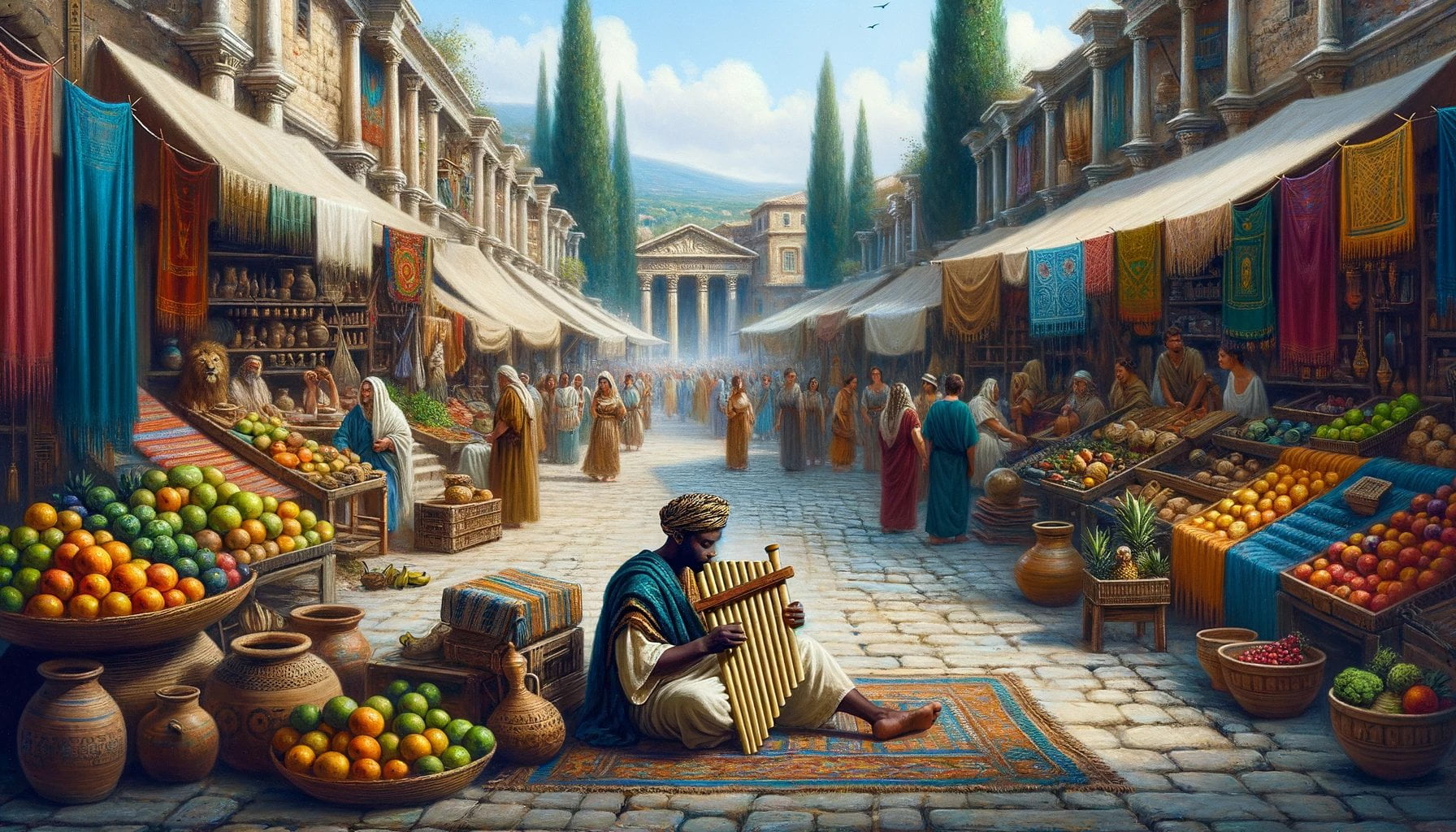
FAQ
Q1: What is the origin of ancient Roman music?
A1: Ancient Roman music and singing originated from Etruscan and Ancient Greek music, with early influences in military purposes.
Q2: Were musical training and skills common among the Roman upper class?
A2: Yes, musical training and skills were common among the Roman upper class, and it may have been especially common among female Romans of the upper class.
Q3: What role did music play in Roman religious rituals?
A3: Music played an important role in Roman religious rituals by setting the rhythm of the ritual and invoking certain emotions. Various instruments had specific roles in Roman religion, with the tibia being the most important instrument in the Roman Imperial cult.
Q4: How did music impact entertainment in ancient Rome?
A4: Music had a significant impact on entertainment in ancient Rome. It accompanied public spectacles, events in the arena, and the performing art form called pantomimus. Musicians, dancers, and singers were also consecrated to ancient Roman monuments and performed in honor of gods and goddesses.
Q5: What were some of the instruments used in ancient Roman music?
A5: Ancient Roman music featured a variety of instruments depicted in Roman art, including woodwinds, “brass,” percussion, and stringed instruments. The tibia, a woodwind instrument similar to the Greek aulos, played an important role in Roman religious rituals and sacrifices.
